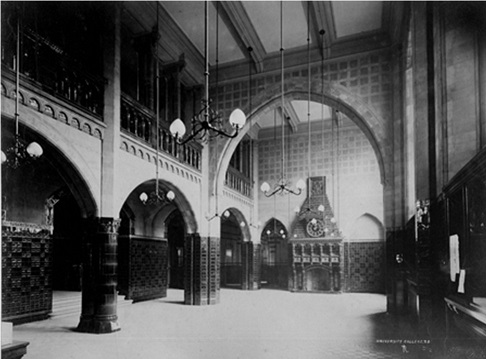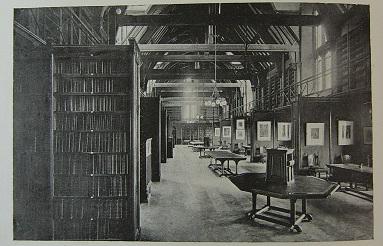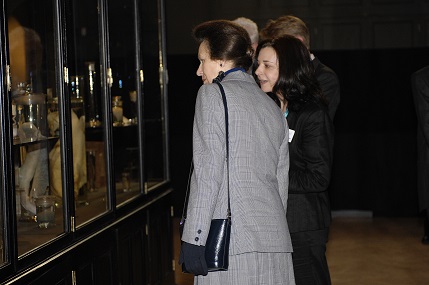From humble beginnings
With just 45 students, University College, Liverpool, opened in 1882 in a converted asylum on Ashton Street. As the College began to rapidly expand, it became apparent that building was no longer suitable.
Five years later in 1887, the year of Queen Victoria’s Golden Jubilee, the College launched a fundraising appeal to erect a purpose-built headquarters. The College’s Council asked Liverpool-born architect Alfred Waterhouse to draw up plans.

The exterior of VG&M circa 1892
The construction of the new University College building, estimated at £35,000, depended on the generosity of the people of the city, with £16,000 raised by 1888. Further contributions included £4,300 from the Liverpool Jubilee Memorial Committee for a clock tower, with Mr (later Sir) William Hartley, the jam manufacturer, funding the clock and bells.
Mr (later Sir) Henry Tate, the sugar refiner of Liverpool and London, donated £20,000 for the library block. The Gothic exterior, built with ordinary bricks and terracotta dressings, later inspired the term "red brick university," coined by Professor Edgar Allison Peers (under the pseudonym Bruce Truscot) a Professor of Spanish at Liverpool (1922 – 1952), who wrote an influential book of the same title about universities originating in the 19th century.

The Grand Entrance Hall, circa 1892
The interior was finished to a similarly high standard, featuring elaborate decorations. The entrance hall was decorated with faience of terracotta, turquoise and buff glazed tiles, while corridors were lined with glazed ivory and brown bricks, divided into bays by arches. Additions such as electric lighting were ahead of their time for buildings of that period. Completed in 1892 at £53,000, exceeding the initial estimate, the building blended architectural drama with practicality.
Due to construction delays, the planned June 1892 opening by the Prince of Wales was cancelled. Lord Spencer, Chancellor of the federal Victoria University, officially opened the building on December 13, 1892.
Life in the Victoria Building
From 1892 onwards, the building was the heart of University life. Besides administration offices it housed a lecture theatre, lecture rooms, staff offices, common rooms and the Tate Library, which was designed to hold 80,000 volumes.
Gradually, as the University grew and more properties were acquired - principally on Abercromby Square - maturing departments moved out of the Victoria Building to ease the mounting pressure on accommodation. Over time, the building’s principal function was to house the University’s administration.
The Tate Library served as the University’s main library until the opening of the Harold Cohen Library in 1938. The space, renamed Tate Hall, became home to some of the University’s art collections and was often used for formal events and as an examination room.

The Tate Library, circa 1892
The Leggate Theatre, though primarily a teaching venue, hosted many concerts, Guild meetings, plays and guest lectures from notable figures such as writer Hilaire Belloc, poet and novelist Walter de la Mare, composer Gustav Holst, classical scholar Gilbert Murray and Academy Award-winning actor Peter Ustinov.
The University’s inaugural lectures, which continue to this day and are delivered by professors appointed to endowed chairs in the University, were also held in the lecture theatre. Described by commentators as what could be “Liverpool’s greatest legacy from the European Capital of Culture”, the Victoria Gallery & Museum is the University’s legacy to the people of Liverpool.
The Leggate Theatre
Officially opened by HRH The Princess Royal, The Victoria Gallery & Museum has evolved from what was a generous gift from the people of Liverpool into an impressive public visitor attraction. And just as in the late 19th century, so today the University enjoys the patronage of people near and far and is grateful to many individuals, trusts, foundations and companies for their support.
The Gothic style, elaborate brickwork, the stunning Italian mosaic paving interior and traditional Victorian tiles work together to give this magnificent building the wow-factor. And following major restoration work in July 2008, at a cost of £8.6 million, this building is now open to everyone as the VG&M one of the most unique Liverpool museums and art galleries.

Princess Anne in the Tate Hall Museum during the 2008 opening of the VG&M
Did you know?...
- The clock tower bears a Royal coat of arms and the inscription ‘Victoriae Reginae Dei Gratia L Annos Feliciter Regnanti Cives Posuerunt’ which translates as ‘For Victoria, Queen by the grace of God, in commemoration of 50 years of fortunate reign; erected by the citizens.’
- The clock was made by the Leeds-based clockmakers Mr William Potts & Sons Company, which was founded by the great-great-grandfather of former University Pro-Chancellor Dr Michael Potts.
- Cast by Taylor of Loughborough, each of the four bells in the clock tower is inscribed with a line from Tennyson’s In Memoriam: ‘Ring out the old, Ring in the new, Ring out the false, Ring in the true, Ring in the Christ that is to be’
- On the front of the building is a plaque that reads: ‘For the advancement of learning and ennoblement of life the Victoria Building was raised by the men of Liverpool in the year of Our Lord 1892’.
- The University’s war memorial, in the entrance hall of the building, is in memory of the staff and students who died in the First World War. A wooden board was later erected in memory of those who died in the Second World War and subsequent conflicts.
- The Latin inscription on the fireplace in the Sculpture Room "Quaecumque sunt vera, purus et pulchra" – originally the women’s common room - translates as ‘Whatever is true, pure, and lovely’ and is based on text from St Paul’s Epistle to the Philippians, Chapter 4, Verse 8.
- The crest at the top of the fireplace in the Waterhouse Cafe shows the words 'Fiat Lux' written inside an open book. Fiat Lux means 'Let there be light.' The scrolled lettering either side of the book says 'Haec otia studia fovent' which translates to 'These days of peace foster learning'.
Discover more on our Virtual Tours
Visit our Interactive Tour page to find out fascinating facts about the Victoria Building.
Watch our history videos on the VG&M YouTube channel
Have a story to tell?
Do you remember studying or working in the Victoria Building? We'd love to hear your story and see your photographs of our building from over the years!
Contact our visitor services team and share your story with us.
Back to: Victoria Gallery & Museum